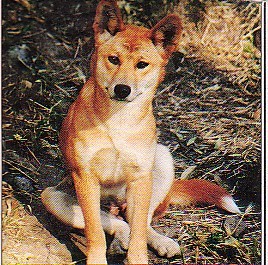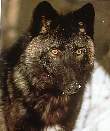| Don't be afraid of the "Little White Dog" |
| Canis familiaris, today's domestic dog is a member of the Genus Canis and the family Canidae. There are 36 species of the Canidae today. The earliest species are at least 30 million years old, making the dog at 10,000 years, the most recent evolutionary addition. Biologists now believe that the ancestor to our modern dog was the Miacis, a tree-dwelling animal with short legs, prick ears and a long tail who lived forty million years ago (not long after the first mamals, but long before the first primates, us). Among this group, all the canines including the Wolf, Fox, Coyote, Jackal, Hyena, Wolverine, Dingo and some less well known species all stem from this original ancestor. Included also in this group is the modern racoon and the bear family - and surprisingly enough, all cats....... The Dingo, which is native to Australia, is the closest "cousin" to the domestic dog, having some of the early traits of the original 'wolf dogs' that evolved into the pets of today. Although the Dingo never developed beyond the traits that the early domesticated dogs had (scavenging for food from human camps), and it was rarely kept as a permanent pet. It is interesting to know that the Dingo is generally a uniform "reddish brown" colour, unlike the Wolf, that comes in a variety of colours due to adaptation according to its surroundings. As a "pure" race, the Dingo carries a relatively weak version of the "variatable gene", a gene that allows a species to evolve and change. Some have very unvariable genetics, such as the Elephant. It is believed that the modern dog in fact stems from individual "wolves" having more "infantile" traits than their wilder brothers, making them more dependant on being fed and taken care of (conveniently by humans) VS hunting for their own food. In addition, their lack of maturity included retaining their ability to "bark" like wolf pups, a trait which attracts attention to themselves. Mature wolves do not bark at all. Barking was a trait that literally lent itself to early humans, as humans have weaker senses of smell or hearing. The 'wolf dogs' had the ability to sense predators and activities around them, and would warn their human friends by 'barking'. So in essence, we humans originally attracted the weaker wolves who could or would 'not' fend for themselves due to this lack of maturity. Early dogs were not 'used' to assist Man, but were merely 'companions'. It was natural progression for humans to intervene with their 'childlike' wolf friends, thus breeding traits into them that eventually formed the various versions of the modern dog, depending on the tribe and their needs. Over time, as these 'wolf dogs' no longer had to depend on the seasons for ideal breeding conditions (regulated by food supply), since food was available year round by human-created prosperity, the 'wolf dog' too began cycling twice a year, having more litters and breeding with each other within the human circle. Interestingly enough, like the original wolf, the Dingo still maintains this yearly cycle, as they are not dependant on humans for food. But both Dingo and Wolf are genetically close enough to be compatable for interbreeding. The outcome is however unpredictable and generally frowned upon. The domestic dog has the strongest variable gene of the canine family, as seen in the many drastic variations in size, shape, colour, coat, character and disposition, from the Great Dane to the Chihuahua, to the English Bulldog, all being able to technically combine 'genetically' to creat offspring, including back tot he Wolf. However, these genetic combinations are considered unpredictable as well as dangerous. Crosses of the domestic and wild versions can turn into 'crazed killing packs' that are "not" afraid of humans and don't just kill for survival... In any case, of all the canine variations, humans have bred characteristics into the domestic dog that have been most desirable to their 'own' needs, including companionship. what makes them an ideal human companion is that the original Wolf has a complex and sophisticated social system much like our own in many ways, which includes many forms of communication, loyalty, cooperation, and high social values, including a Very Strong mother instinct, a need to belong, and a need for hierarchy and obedience among each other.....In Archeological findings, there is no evidence in Europe that dogs were used for food (even in lean times) although there is evidence that Dingos in Australia were sometimes killed for food when necessary. This may explain the lack of full commitment and a degree of mistrust of the Dingo to the Human....The Dingo in fact remains unchanged by human intervention, other than the unplanned and undesired breeding with domestic dogs owned by respectable people, creating virtually 'untamable' and 'menacing' destructive packs which are hunted and killed in Australia to control plundering etc.. We can far better predict the domestic breeds we have created over the centuries, regardless of their geographic origins, although most we find originate from the broader areas of Europe, some in Africa and Asia. It was the common mutual benefit and similar social values that created the various domestic dogs we find today. |
 |
 |
| Black Wolf |
| Gray Timber Wolf |
| Dingo |